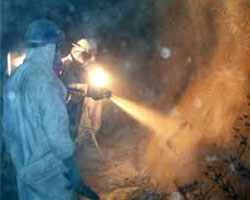Refractory Lining

Refractories are heat-resistant materials that constitute the linings for high-temperature furnaces and reactors and other processing units. In addition to being resistant to thermal stress and other physical phenomena induced by heat, refractories must also withstand physical wear and corrosion by chemical agents. Refractories are more heat resistant than metals and are required for heating applications above 1000°F (538°C).
While this definition correctly identifies the fundamental characteristics of refractories--their ability to provide containment of substances at high temperature--refractories comprise a broad class of materials having the above characteristics to varying degrees, for varying periods of time, and under varying conditions of use. There are a wide variety of refractory compositions fabricated in a vast variety of shapes and forms which have been adapted to a broad range of applications. The common denominator is that when used they will be subjected to temperatures above 1000°F (538°C) when in service. Refractory products fall into two categories: brick or fired shapes, and specialties or monolithic refractories. Refractory linings are made from these brick and shapes, or from specialties such as plastics, castables, gunning mixes or ramming mixes, or from a combination of both.





